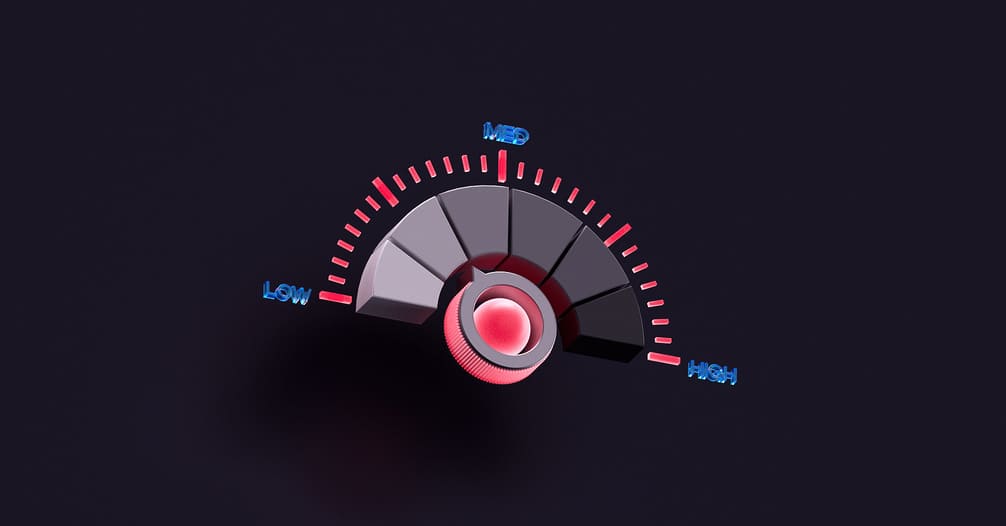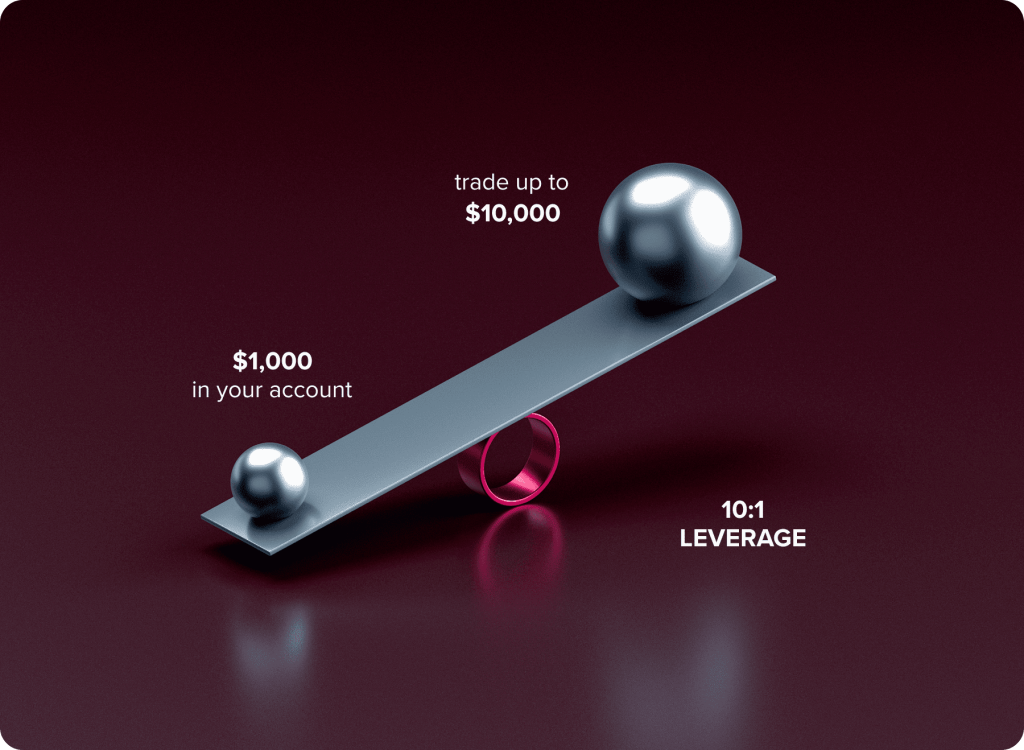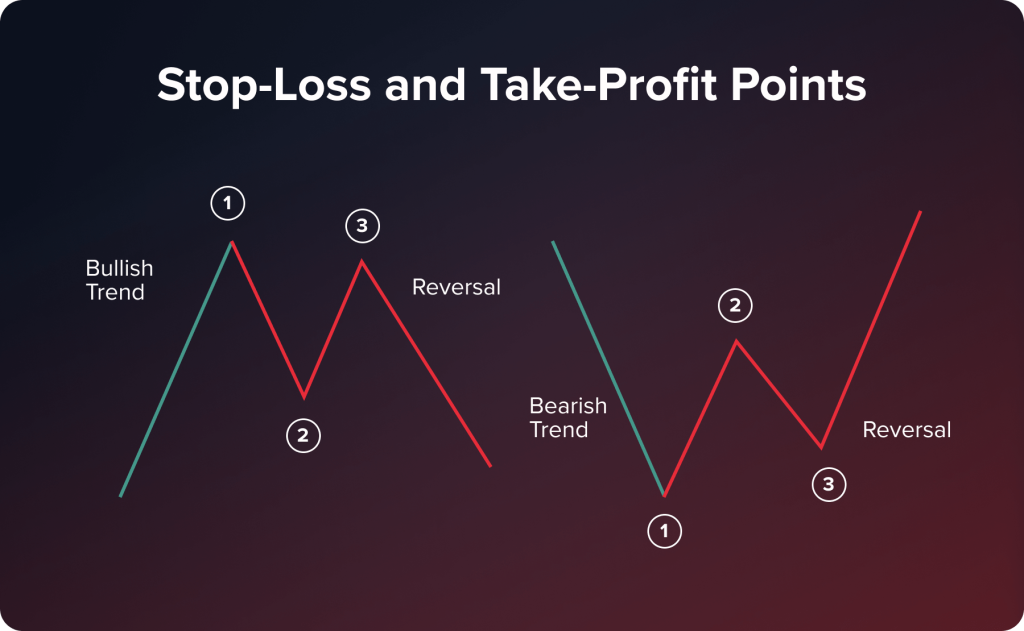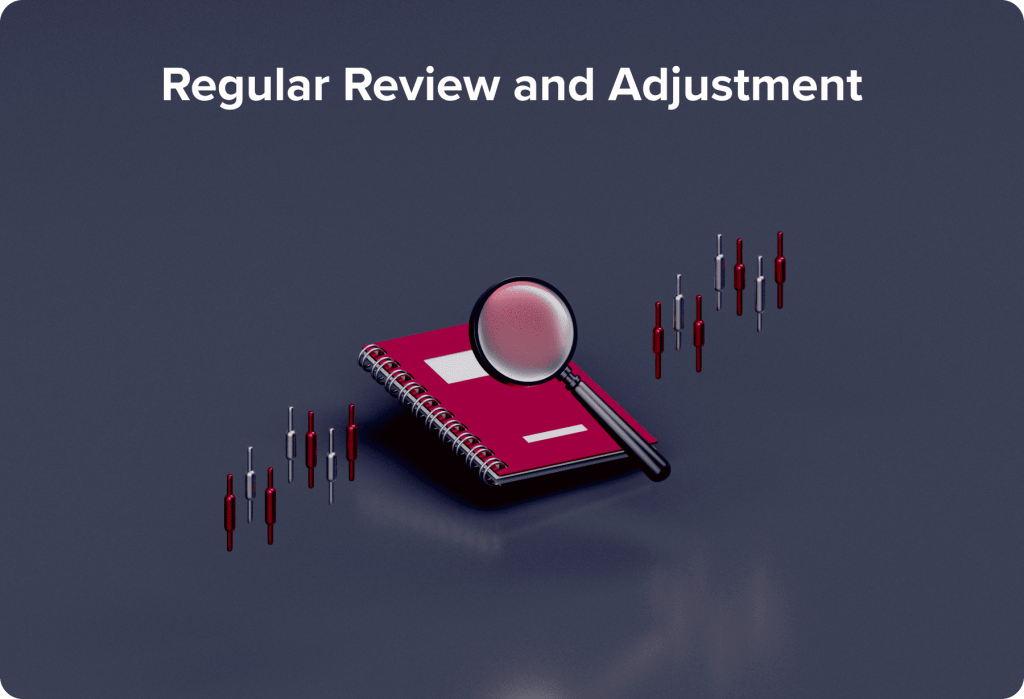
O que é gerenciamento de risco em negociação e como ele funciona?
Conteúdo
A gestão de risco na negociação diz respeito às práticas que os traders adotam para reduzir possíveis perdas e proteger seu capital por meio de estratégias de gestão de risco que consistem no uso de diversificação, ordens stop-loss, alavancas e revisão de negociações em intervalos regulares, especialmente após perdas, para capturar oportunidades em condições de mercado em mudança.
Basicamente, a gestão de risco consiste na conscientização, avaliação e tratamento de possíveis perdas em negociações. No trading, a gestão de risco não se limita à proteção de você e de seus fundos, mas também é um componente necessário de boas estratégias. O artigo a seguir analisará como a gestão de risco pode ajudar a proteger seu dinheiro e garantir o sucesso nas negociações.
Pontos-chave
- Gerenciar riscos é uma função necessária para a proteção de capital e redução de perdas em negociações.
- Ferramentas de risco como ordens de stop-loss, controle de alavancagem e diversificação de portfólios existem para limitar a exposição.
- A relação risco-recompensa é uma ferramenta para avaliar o possível retorno de uma operação em relação à possível perda antes de entrar em uma operação.
- Revisar estratégias regularmente garante que sua abordagem reflita as mudanças do mercado, bem como suas metas de desempenho.
- Uma melhor gestão de riscos desenvolve disciplina, reduz negociações motivadas por emoções e aumenta as chances de lucratividade a longo prazo.
Princípios Fundamentais da Gestão de Riscos
A gestão de risco é sustentada por uma variedade de princípios que abordam diversos aspectos do risco associado à negociação. Esses princípios são a base de um plano de gestão de risco sólido. Ao compreender e implementar esses princípios de forma eficaz, os traders podem tomar decisões bem informadas, manter uma carteira equilibrada e minimizar perdas potenciais, maximizando as oportunidades de lucro.
Princípio 1: Diversificação
No mundo da negociação e do controle de risco, a diversificação é um conceito fundamental. Significa distribuir ativos entre mercados e instrumentos para atenuar o impacto do baixo desempenho de um ativo em todo o portfólio.
Ao distribuir os investimentos entre os setores e classes de ativos Com diferentes reações às mudanças econômicas, a diversificação busca essencialmente oferecer proteção contra o caráter turbulento e frequentemente errático dos mercados. Por exemplo, uma área pode estar em declínio enquanto outro setor está em expansão, preservando assim o equilíbrio no desempenho da carteira de investimentos. Se o setor de tecnologia estiver em dificuldades, o setor de saúde pode estar prosperando e vice-versa. Nesse sentido, o desenvolvimento em uma região pode compensar flutuações ou quedas na economia de outro país.

Implementando um Portfólio Diversificado
A criação de uma carteira de investimentos completa exige a compreensão das ligações entre diversos ativos e como elas afetam o risco total da carteira, não apenas a escolha de diferentes ativos. Também envolve a fusão de equivalentes de caixa, ações, títulos e commodities. Além disso, a diversificação se estende ao equilíbrio de investimentos em setores como tecnologia, saúde, finanças e bens de consumo para minimizar riscos e aumentar a estabilidade da carteira.
Adicionar diversificação geográfica proporciona um nível de proteção ao distribuir investimentos entre vários países e regiões para mitigar o impacto da crise econômica em áreas específicas. Essa abordagem é vital no mercado interconectado de hoje, onde eventos políticos em uma região podem causar efeitos em todo o mundo.
Equilibrando o Portfólio
Gerenciar riscos exige diversificação dos seus ativos. No entanto, é importante encontrar o equilíbrio para evitar uma dispersão excessiva e, potencialmente, reduzir seu potencial de ganhos. Alcançar esse equilíbrio exige compreensão dos mercados e setores e pode envolver lidar com complexidades adicionais, especialmente quando se trata de investimentos internacionais.
Diversificação como um processo contínuo
Saber que a diversificação não é uma configuração única, onde você simplesmente a configura uma vez e depois a esquece completamente, é importante porque, assim como os mercados mudam ao longo do tempo, os planos de diversificação também devem evoluir de acordo, verificando e adaptando o portfólio de investimentos para corresponder à dinâmica de mercado em constante mudança e aos objetivos financeiros individuais.
Essencialmente, a diversificação na negociação envolve encontrar o equilíbrio entre minimizar riscos e aproveitar o potencial de oportunidades de crescimento. Para se adequar à tolerância ao risco e aos objetivos de investimento de cada trader, esse procedimento requer observação e modificação constantes. O uso de estratégias de diversificação ajuda os traders a construir uma carteira que possa negociar com mais sucesso os altos e baixos dos mercados financeiros.
Princípio 2: Compreendendo e gerenciando a alavancagem
A alavancagem na negociação pode aumentar significativamente os lucros, ao mesmo tempo em que amplifica as perdas. A alavancagem envolve a utilização de dinheiro emprestado para ampliar os ganhos de um investimento. Como a alavancagem geralmente envolve o empréstimo de fundos, ela se sobrepõe aos conceitos básicos de negociação de margem .
Embora possa parecer atraente, essa estratégia exige uma abordagem bem pensada e uma estratégia para lidar com ela adequadamente.

A Mecânica da Alavancagem na Negociação
Os traders utilizam alavancagem para gerenciar grandes posições com um capital relativamente modesto disponível; por exemplo, com um índice de alavancagem de 10x, o trader pode comandar uma posição de US$ 10.000 com apenas US$ 1.000 de seus próprios fundos investidos. Essa estratégia pode resultar em ganhos significativos quando o mercado se move a seu favor. No entanto, também apresenta riscos, pois mesmo uma leve mudança desfavorável pode resultar em perdas rápidas que excedem o investimento inicial.
Navegando pelos riscos e recompensas
A atração por maiores ganhos por meio de negociações alavancadas deve ser ponderada em relação ao reconhecimento dos perigos associados ao processo. A alavancagem aumenta tanto as vantagens quanto as desvantagens nas operações de negociação, aumentando, portanto, os riscos para os traders. Os traders devem compreender que, embora a alavancagem possa aumentar seu poder de compra, ela também aumenta seus riscos em situações de rápida volatilidade do mercado.
Uso Prudente de Alavancagem
O uso responsável da alavancagem implica seguir um conjunto de práticas. Antes que os traders decidam utilizar a alavancagem em suas negociações e gerenciem seus níveis de risco com segurança, é essencial que eles realizem uma avaliação dos riscos potenciais envolvidos no processo de uso da alavancagem, observando as condições atuais do mercado e estando cientes da possibilidade de flutuações repentinas e significativas. É crucial que os traders mantenham capital suficiente para cobrir quaisquer chamadas de margem e evitar se comprometerem financeiramente. É necessário também possuir conhecimento da dinâmica do mercado e ampla experiência em negociações, levando em consideração os detalhes complexos das mudanças de mercado e como a alavancagem influencia diversos tipos de ativos.
Alavancagem como ferramenta estratégica
A alavancagem é definitivamente considerada um ativo e uma força positiva para os traders, embora envolva riscos. Traders experientes incorporam a alavancagem em suas operações. estratégia de negociação along with risk management methods to enhance their estratégia de negociação as a whole. Trading leverage can be a tool with both benefits and drawbacks to consider carefully before diving in headfirst.
Princípio 3: Definir pontos de stop-loss e take-profit
Ordens de stop-loss e take-profit funcionam como vigilantes que protegem a carteira de um trader. Essas ferramentas não são meros mecanismos para gerenciar transações; são essenciais para impor disciplina e planejamento estratégico no mundo frequentemente turbulento das negociações.

O papel das ordens de stop-loss
Geralmente colocadas em um ponto em que estão prontas para assumir uma perda específica, mas não além disso, os traders usam ordens de stop loss para cancelar posições em um nível de preço predefinido, limitando assim possíveis perdas nas transações.
Imagine o seguinte: um trader paga US$ 50 por uma ação na esperança de que seu valor de mercado aumente. Considerando a volatilidade do mercado, o trader então ordena um stop loss a US$ 45 para restringir as perdas caso o preço da ação caia para esse nível, garantindo assim a contenção das perdas e o fechamento da posição. Em mercados onde os preços mudam rapidamente e a ação manual pode não ser rápida o suficiente, essa abordagem é especialmente vital.
A importância das ordens Take-Profit
Por outro lado, uma ordem de take profit busca garantir ganhos encerrando a transação sempre que ela ultrapassa um nível de lucro predefinido. Isso permite que os traders maximizem as recompensas sem ceder à avareza ou à ansiedade de perder lucros.
Um trader pode, por exemplo, definir uma ordem de realização de lucro para uma ação comprada a US$ 50 e vendida a US$ 60. O processo é realizado quando a ação atinge esse preço, garantindo assim o lucro. Quando um trader não consegue monitorar o mercado e garante que não perderá oportunidades de lucrar com os movimentos de preço, esse recurso é extremamente útil.
Equilibrando Risco e Recompensa
Equilibrar risco e recompensa é o foco tanto das ordens de stop loss quanto das de take profit. Elas permitem que os traders estabeleçam metas de tolerância a riscos e lucros, ao mesmo tempo em que oferecem um método de negociação que dispensa a observação constante do mercado ou a dependência excessiva de emoções na tomada de decisões.
Em um mercado onde os preços estão subindo durante uma tendência de alta, os traders podem modificar essas ordens com base em seus planos de negociação e estratégias de avaliação de mercado. Por exemplo, um trader pode utilizar níveis mais altos de take profit ou ajustar as ordens de stop loss para faixas de preço mais altas, a fim de maximizar os lucros potenciais e, ao mesmo tempo, gerenciar o risco de perdas de forma eficaz.
Implementação estratégica
Para implementar corretamente os pontos de stop loss e take profit, é preciso primeiro entender os padrões de mercado e desenvolver sua própria estratégia de negociação. Ao selecionar o quão apertadas ou folgadas serão essas ordens, é preciso considerar as opções disponíveis. Colocá-las muito próximas pode resultar no fechamento antecipado da operação, mas colocá-las muito distantes pode resultar em exposição excessiva ao risco.
Definir ordens de stop loss e take profit vai além da gestão de risco; demonstra a atitude do trader em relação ao mercado, bem como sua disciplina e compreensão da dinâmica da negociação. Ao emitir essas ordens, os traders podem navegar com confiança por suas complexidades, sabendo que seus investimentos e ganhos estão protegidos.
Princípio 4: Relação Risco-Recompensa
Uma maneira de avaliar o risco de uma operação é observar a relação risco-recompensa. Ela ajuda os investidores a ponderar o possível ganho em relação à possível perda em uma determinada transação. Uma relação risco-recompensa de 1:3 ocorre quando um trader está disposto a arriscar US$ 1 na esperança de ganhar US$ 3. Os traders podem determinar quais opções são adequadas aos seus objetivos de negociação e tolerância ao risco com a ajuda dessa relação.

Aplicação em Estratégias de Negociação
Abordagens, estratégias e decisões em negociações são influenciadas pelo equilíbrio entre risco e recompensa. Para avaliar a probabilidade de sucesso de uma operação, os traders observam a relação risco-recompensa. Uma negociação que apresenta essa relação normalmente atrai interesse e está alinhada a uma abordagem estratégica focada na gestão prudente de riscos, visando resultados lucrativos.
Os traders usam a relação risco-recompensa para avaliar o potencial de uma operação antes de se comprometer com ela. O cálculo da relação risco-recompensa também requer a compreensão dos custos de negociação, como espalha . De modo geral, uma negociação com uma boa proporção é mais atraente, pois se encaixa em um plano que visa equilibrar eficientemente o risco com os possíveis lucros.
Esta estratégia concentra-se em ponderar os riscos em relação às recompensas para tomar decisões de negociação ponderadas que considerem cuidadosamente os resultados positivos e negativos de forma ponderada. Ela destaca a importância de fazer escolhas sábias ao lidar com mercados instáveis e instáveis. Ao dar importância a essa relação risco-recompensa ao negociar ações ou ativos, os investidores podem desenvolver planos que não apenas mitigam os riscos, mas também visam ganhos substanciais, levando, em última análise, a uma abordagem de negociação estável e duradoura.
Adaptação aos estilos de negociação individuais
Os traders têm preferências quanto à relação risco-recompensa com base em sua tolerância ao risco e abordagem de negociação em diferentes condições de mercado. Alguns optam por uma abordagem cautelosa, enquanto outros adotam uma postura mais ousada. O segredo é encontrar uma relação que se alinhe às suas crenças de negociação e visão de mercado.
Princípio 5: Revisão e Ajustes Regulares
Em um mundo onde os mercados estão em constante mudança e adaptação a novas condições e tendências, é crucial que os traders reavaliem e refinem continuamente suas estratégias de gestão de risco. Isso não é apenas um exercício. É uma prática que garante que as estratégias permaneçam eficientes e responsivas às mudanças do mercado.

A necessidade de revisões estratégicas regulares
No mundo das finanças e investimentos, navegar pelos mercados é como resolver um quebra-cabeça que muda constantemente. Por isso, é essencial reavaliar constantemente suas estratégias por meio de revisões regulares, pois elas desempenham um papel fundamental para garantir o sucesso e a adaptabilidade neste ambiente dinâmico.
- Mantendo-se informado sobre os desenvolvimentos do mercado
Os mercados podem mudar rapidamente devido a fatores como atualizações de dados, eventos geopolíticos ou mudanças no sentimento dos investidores. É essencial manter-se informado sobre essas tendências para ajustar suas estratégias de negociação de acordo.
- Analisando o desempenho das estratégias atuais
Um aspecto crucial consiste em avaliar a eficácia das táticas existentes à luz do ambiente de mercado para obter insights sobre seu sucesso e áreas de melhoria que podem ser necessárias.
- Identificando novos riscos e oportunidades
A avaliação de situações e circunstâncias também exige atenção aos desafios e possíveis oportunidades à frente. À medida que o cenário do mercado muda ao longo do tempo, novas dificuldades podem surgir, exigindo uma reavaliação e ajustes nas estratégias de gestão de riscos. Da mesma forma, novas oportunidades que antes não estavam no radar podem surgir.
Flexibilidade: A Chave para a Adaptação
Em tais revisões e reajustes, a ideia central é a flexibilidade. Ter a mente aberta a mudanças e ajustar estratégias com base em informações ou em mudanças nas condições de mercado é fundamental aqui. Flexibilidade na negociação é um conceito que vai além de ajustar números ou mudar posições. Ela obriga o investidor a rever sua tolerância ao risco, que pode mudar dependendo da sua situação pessoal e da volatilidade do mercado. Revise e altere seu plano de negociação conforme necessário para garantir que ele ainda se ajuste aos seus objetivos e à situação do mercado.
Além disso, a flexibilidade envolve a realização de revisões necessárias com base em insights coletados a partir de análises de mercado e avaliações do desempenho das estratégias atuais. Por exemplo, um trader pode considerar sensato ajustar suas posições de investimento, refinar suas ordens de stop loss e take profit ou explorar classes ou setores de ativos. Essa capacidade de adaptação é crucial no mundo das negociações, pois as circunstâncias do mercado podem mudar abrupta e imprevisivelmente. É preciso ser adaptável e reagir rapidamente, além de estar preparado para lidar com as mudanças e transformações com uma estratégia robusta, porém flexível, capaz de se ajustar ao ambiente de negociação em constante evolução.
Sua lista de verificação de gerenciamento de riscos
Use esta lista de verificação como seu guia de início rápido para reduzir riscos e promover disciplina em todas as negociações:
- Coloque ordens stop-loss e take-profit em cada negociação
- Use o dimensionamento de posição adequado para seu capital e tolerância ao risco
- Evite a alavancagem excessiva - nunca arrisque mais do que você pode perder
- Aloque capital entre classes de ativos, setores e regiões para diversificar seu portfólio
- Revise e recalibre sua estratégia regularmente, com base em seu desempenho e nas mudanças do mercado.
Por que a gestão de riscos é importante no mercado de 2025
Em 2025, os mercados financeiros estarão entre os mais arriscados que já vimos. Com a incerteza geopolítica, as altas taxas de juros e a IA se tornando predominante (por exemplo, algoritmos que executam as negociações automaticamente, e há um ecossistema acelerado e arriscado), as margens de erro para traders de varejo e institucionais estão diminuindo.
Gestão de riscos não é algo bom de se ter... é um véu de sobrevivência.
Os traders devem adotar abordagens proativas para garantir a proteção da exposição de capital, gerenciar a exposição à volatilidade e permanecer adaptáveis a flutuações repentinas no mercado. Seja trabalhando em meio a mudanças políticas pós-pandemia, mudanças no fluxo de negociação algorítmica ou em desacoplamento da economia global, a gestão de risco permitirá negociações disciplinadas, consistentes e competitivas.
No mercado atual, não ter uma apólice de seguro de risco é, por si só, um risco.
Erros frequentes na gestão de riscos (e como evitá-los)
Evitar negociações emocionais requer uma forte compreensão de psicologia de negociação . Até mesmo traders experientes podem sucumbir a armadilhas psicológicas ou cometer erros de comissão, mas identificar esses erros comuns é o começo para construir uma estratégia de negociação robusta.
Apostas excessivas nas oscilações do mercado
O excesso de negociação é frequentemente associado a negociações extras durante movimentos voláteis do mercado
Dica: Mantenha seu plano de negociação e limite o número de operações por dia. Mantenha-se fiel aos parâmetros de risco que você criou. Todas essas operações adicionais feitas em meio ao ruído do mercado serão decisões impulsivas.
Não usar ordens de stop-loss
Pular ordens de stop-loss coloca seu capital em risco de queda ilimitada quando você é pego de surpresa durante quedas repentinas no mercado.
Dica: Deve sempre haver uma ordem stop-loss antes de abrir uma posição. Ela deve ser baseada em análise técnica, não em prejuízos para o contribuinte. Se precisar ajustar seu stop, faça-o conforme a operação avança.
Negociação de vingança
Quando você sofre uma perda, o desejo de "reconquistá-la" geralmente resulta em erros ainda maiores, principalmente quando você tem um senso de urgência, medo ou frustração.
Dica: Após uma perda, faça uma pausa. Reflita sobre seu plano de negociação e o que precisa ser melhorado nele, e pense em entrar no mercado novamente apenas com a mente limpa.
A relação risco-recompensa
A relação risco-recompensa precisa ser bem compreendida antes de entrar em uma operação! Se você abrir uma operação sem identificar o potencial de alta e baixa, você distorceu todas as suas posições vencedoras e perdedoras.
Conclusão
A gestão de risco em operações é complexa e exige mais do que conhecimento teórico. Operar em mercados financeiros voláteis exige que os traders tenham ferramentas avançadas de gestão de risco, habilidades analíticas e força psicológica para tomar decisões disciplinadas. Esses diversos aspectos podem ser combinados em uma abordagem unificada de gestão de risco para ajudar os traders a lidar com a complexidade e a volatilidade dos mercados financeiros, transformando a gestão de risco de uma tática defensiva em uma estratégia de negociação fundamental.
FAQ
Um exemplo típico de gestão de risco em negociações é o stop-loss. Um exemplo de stop-loss é quando um trader compra uma ação a US$ 100 e, em seguida, define um stop-loss em US$ 95. Assim, se o preço da ação cair para US$ 95, a posição fecha automaticamente ao preço de mercado, limitando a perda do trader a 5%. Isso ajuda não apenas a gerenciar o risco, mas também a eliminar a emoção na tomada de decisões e pode conservar capital em mercados voláteis.
A relação risco/recompensa para um trader ajuda-o a determinar se vale a pena assumir a operação. Por exemplo, se negociar com uma relação risco/recompensa de 1:3, poderá ganhar US$ 300 para cada US$ 100 arriscados. Mesmo que um trader tenha tido uma sequência ruim de perdas, se desenvolver a disciplina para assumir operações com boa relação risco/recompensa, poderá ser lucrativo.
– Um stop-loss fechará automaticamente a operação quando ela cair para o preço que você definiu para perda. – Uma ordem take-profit fecha a posição de um trader quando uma meta predefinida é atingida, garantindo o lucro. – Ambas fornecem automaticamente aos traders uma estratégia de saída e eliminam o sofrimento emocional.
Um iniciante pode gerenciar o risco ao negociar: – Começar com uma conta demo para praticar. – Usar baixa alavancagem ou negociar sem alavancagem. – Definir pontos claros de stop-loss e take-profit. – Diversificar negociações e métodos entre os ativos. – Nunca arriscar mais de 1-2% do seu capital por negociação. – Revisar regularmente a estratégia com base no desempenho.
Atualizado:
25 de julho de 2025



